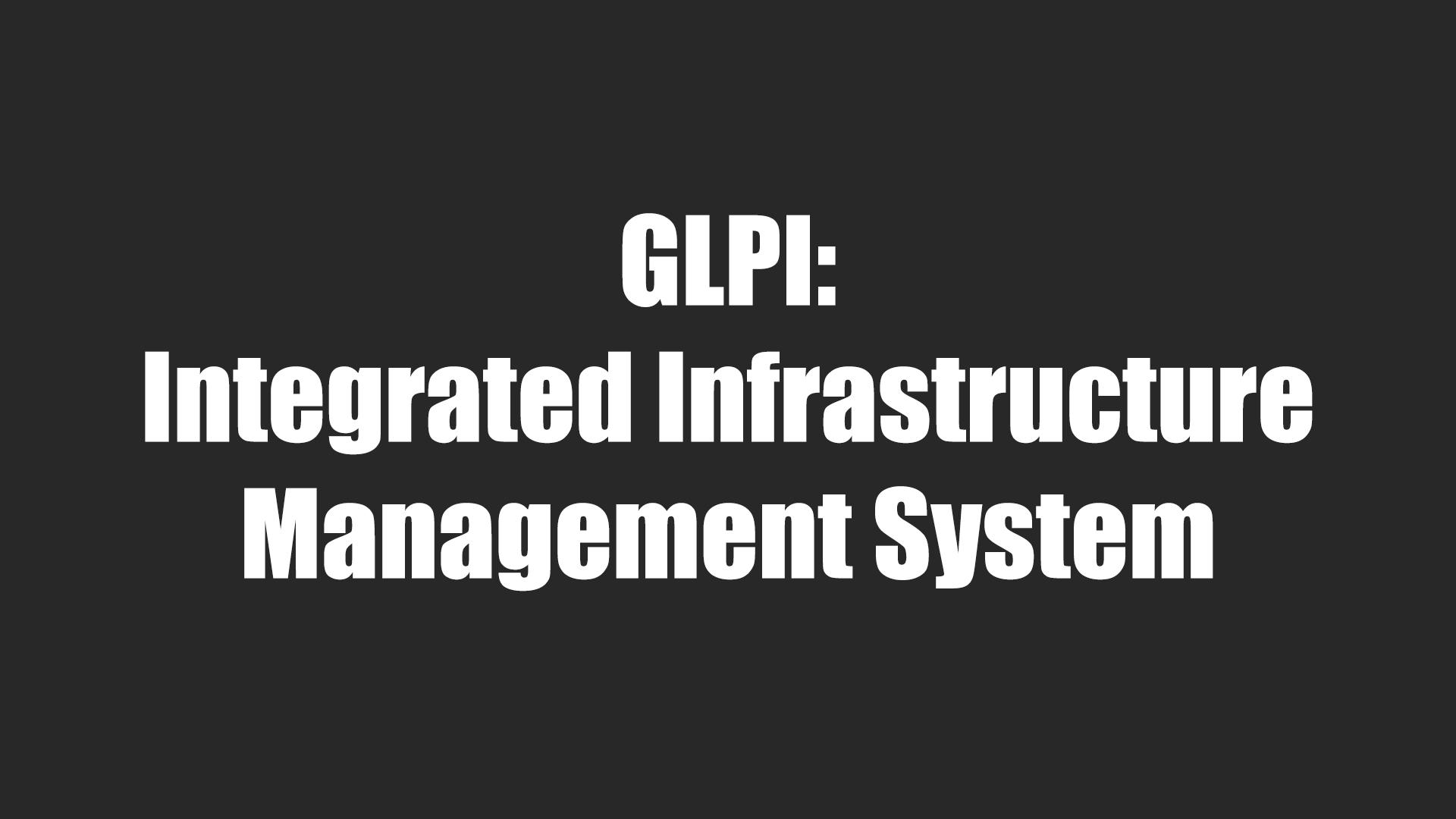GLPI: Integrated Infrastructure Management System

In the modern world of information technology, it is important to have an effective and reliable tool for managing IT services and assets. Such a tool should provide:
- Organizing and tracking requests and incidents from customers and employees
- Inventory and accounting of hardware, software and data
- Planning and control of projects, expenses, contracts and suppliers
- Analysis and reporting on key indicators and statistics
- Compliance with standards and regulations such as ITIL, ISO, GDPR, etc.
One such tool is GLPI, a free and open source IT services and asset management solution that offers a wide range of functionality and capabilities for various business areas and organizations.
Main information
GLPI is an abbreviation of Gestionnaire Libre de Parc Informatique, which means a Free IT Infrastructure Manager. GLPI was created in 2003 by French developers and has since been widely distributed and supported by the community around the world. GLPI is part of the Teclib project, which brings together several free and open source IT service and asset management products.
GLPI works on the basis of a web interface that is accessible through any modern browser. GLPI requires a web server (for example, Apache or Nginx), a database (for example, MySQL or MariaDB) and the PHP programming language. GLPI supports various operating systems such as Windows, Linux, macOS, BSD, etc. GLPI can also be installed on virtual machines or cloud platforms such as AWS, Azure, Google Cloud, etc.
GLPI provides a free and open source version that can be downloaded from the official website glpi-project.org or from the repository on GitHub github.com/glpi-project/glpi . In addition, GLPI offers paid versions with professional support and warranty, which can be purchased at [glpi-network.cloud] or [glpi-network.com ].
An explanation of what it is and how it works
GLPI is a comprehensive IT services and asset management solution that consists of several modules and components. The main GLPI modules include:
- Helpdesk: a module for organizing and processing requests and incidents from customers and employees. Helpdesk allows you to create, assign, resolve, comment and close applications, as well as create forms, define SLAs, generate statistics and reports on applications.
- CMDB: a module for inventory and accounting of hardware, software and data. CMDB allows you to scan, import, add, edit, link and delete assets, as well as analyze the impact and relationships between assets, generate dashboards and asset reports.
- Management: a module for planning and monitoring projects, expenses, contracts and suppliers. Management allows you to create, assign, track, complete and evaluate projects, as well as manage budgets, accounts, contracts and suppliers, and generate management reports.
- Administration: a module for configuring and administering GLPI. Administration allows you to manage users, groups, profiles, access rights, notifications, backups, updates, logs and other GLPI parameters.
- Marketplace: A module for extending and improving GLPI functionality with additional plugins and themes. The Marketplace allows you to view, install, activate, deactivate and delete plugins and themes, as well as receive support and updates from developers.
- GLPI works according to the following principle: users and employees contact GLPI via the web interface or by e-mail to create a request or receive information about an asset. GLPI processes the application or request, appoints a responsible person, sends notifications, logs actions and changes, generates status and history. GLPI also scans and collects information about assets, stores them in a database, analyzes them and provides reports and dashboards. GLPI also allows you to plan and control projects, expenses, contracts and suppliers, as well as configure and administer the system.
Why do people use it
People use GLPI for various reasons, but the main ones are the following:
- GLPI is a free and open solution that does not require royalties and has no restrictions on functionality or the number of users. GLPI is also supported by a large and active community that offers help, advice, training and development.
- GLPI is a comprehensive and flexible solution that covers all aspects of IT services and asset management, from Helpdesk to CMDB, from Management to Administration, from Marketplace to Setup.
What advantages will this give to your business?
GLPI can provide many benefits to your business if you decide to use it to manage IT services and assets. Some of these advantages are:
- Improving the quality and efficiency of IT services by optimizing processes, reducing reaction and decision time, increasing customer and employee satisfaction, reducing costs and risks.
- Increase control and visibility over IT assets by centralizing and standardizing information, ensuring completeness and relevance of data, analyzing and reporting on the status and use of assets, compliance with licenses and regulations.
- Expanding the capabilities and flexibility of the IT system, due to a modular and open architecture, a customizable and adaptive interface, integration with other systems and applications, and functionality expansion using plug-ins and themes.
Conclusion
GLPI is a free and open-source IT services and asset management solution that offers a wide range of functionality and capabilities for various business areas and organizations. GLPI allows you to organize and track applications and incidents, inventory and account for hardware, software and data, plan and control projects, expenses, contracts and suppliers, configure and administer the system, expand and improve functionality using plugins and themes. GLPI can provide many benefits to your business if you decide to use it to manage IT services and assets, such as improving the quality and efficiency of IT services, increasing control and visibility over IT assets, and expanding the capabilities and flexibility of the IT system. GLPI is a comprehensive and flexible solution that is suitable for any size and type of business and organization that wants to optimize and improve their IT services and assets.


